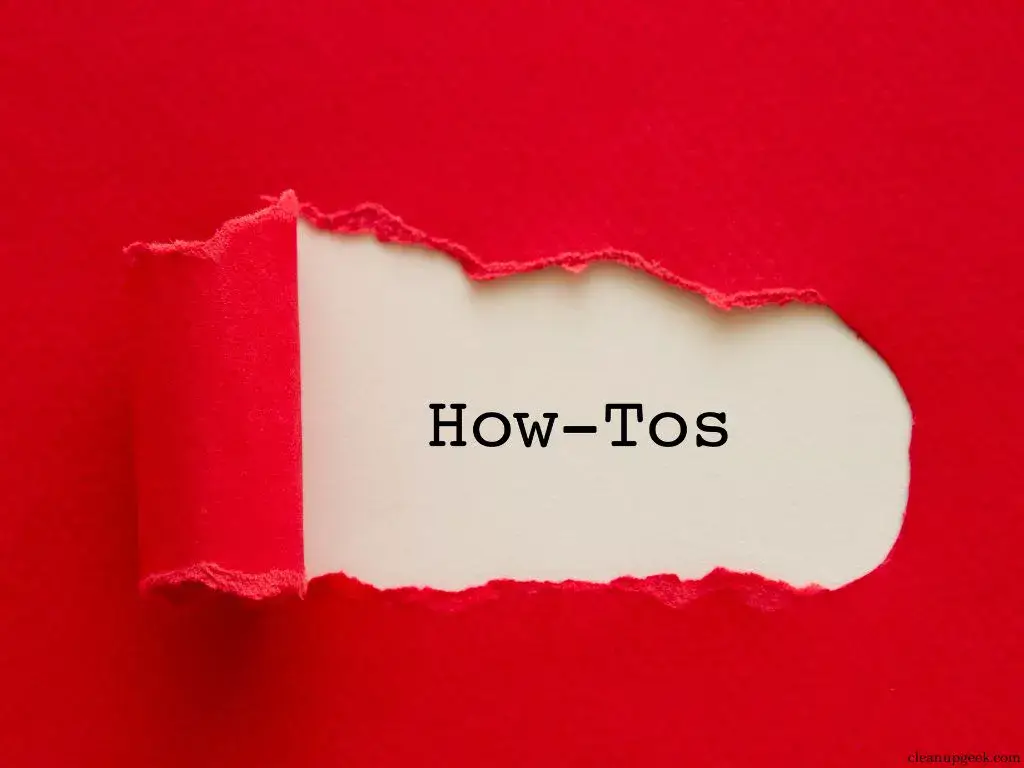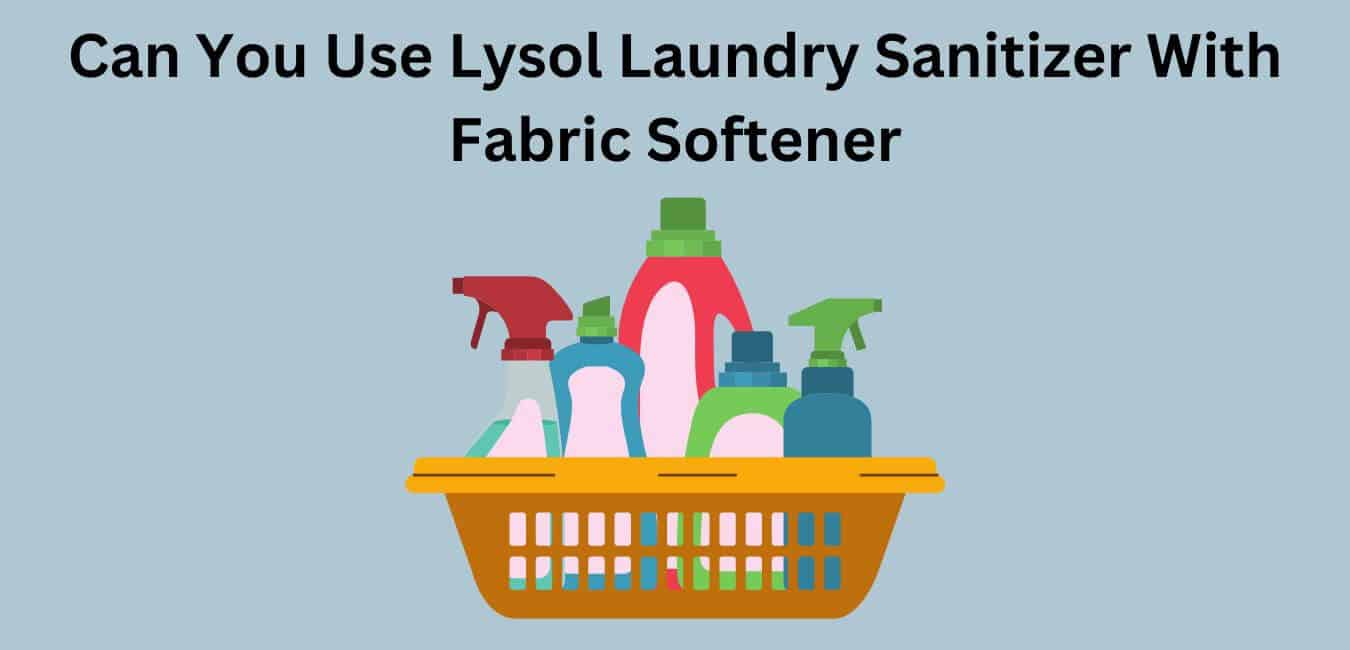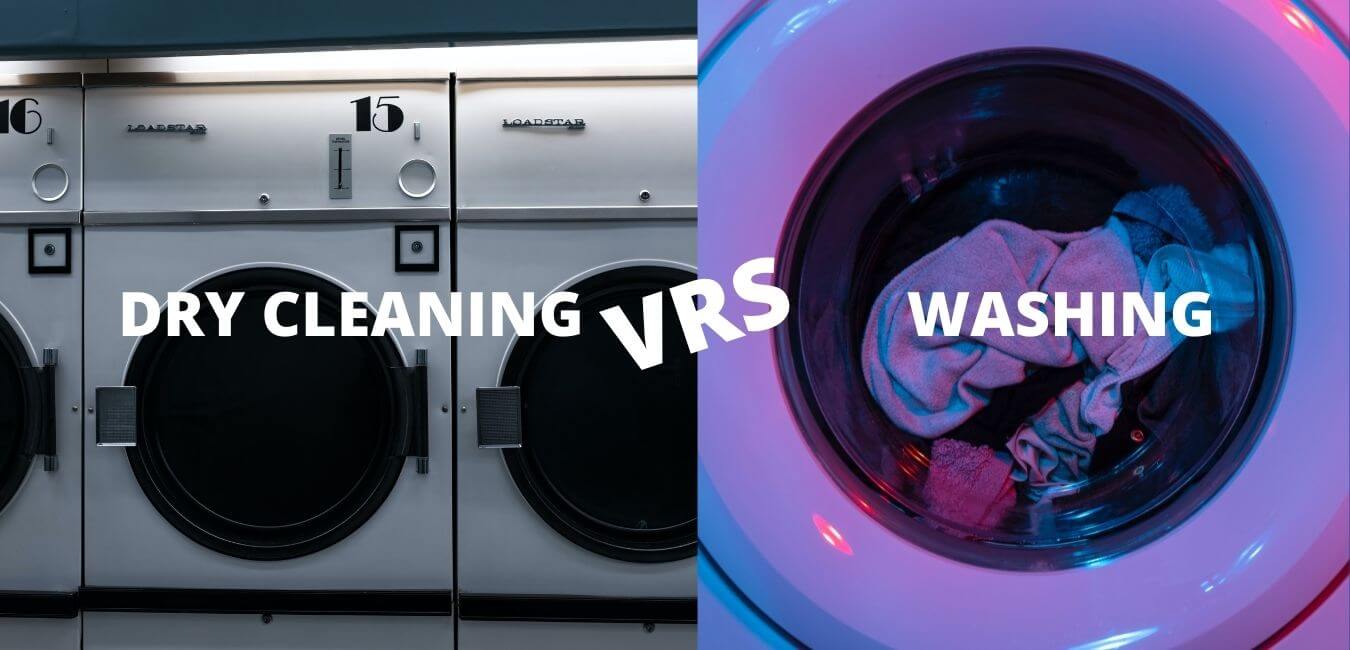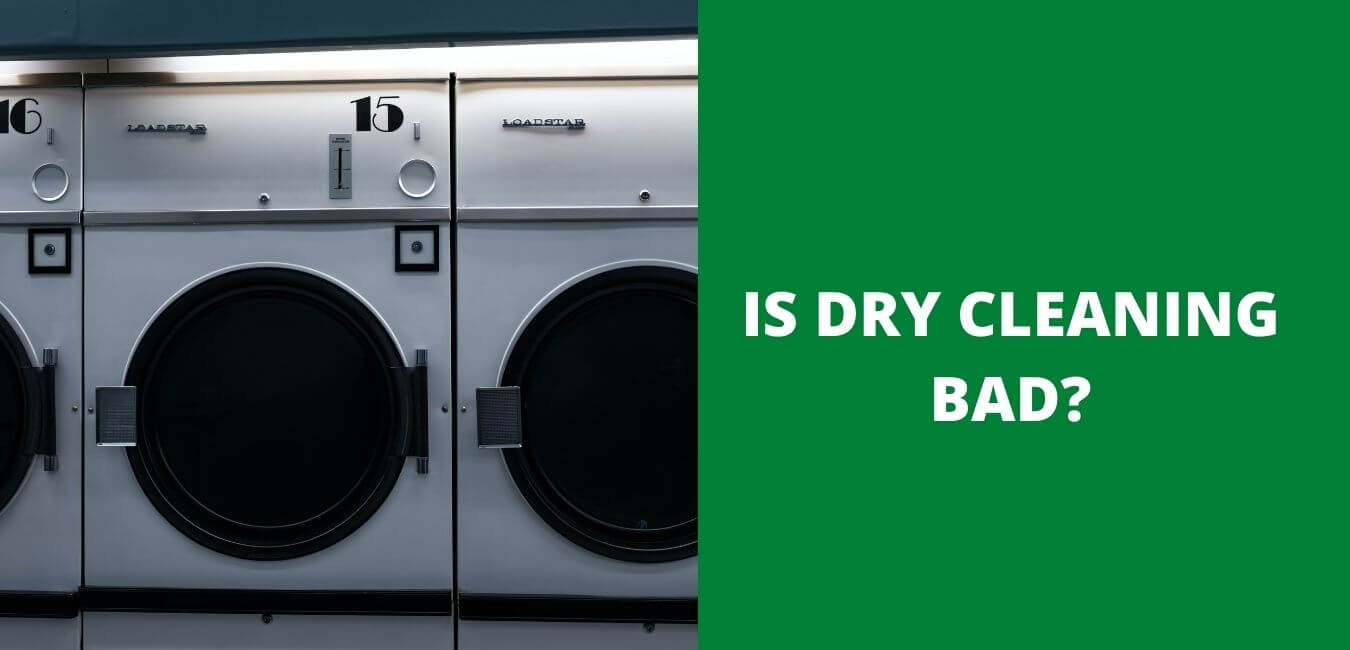Do you find yourself pondering if Lysol Laundry Sanitizer and fabric softener can be mixed into your laundry routine? Well, it’s a concern shared by many cleanliness enthusiasts! This article breaks down the facts surrounding this common question, offering useful insights into potential risks and optimal practices.
With tips for achieving fresh-smelling laundry without compromising hygiene standards, keep reading to banish bacteria with confidence!
Key Takeaways
- Mixing Lysol Laundry Sanitizer with fabric softener is not recommended due to potential risks and drawbacks, including potential chemical interactions, risk of irritation, residue build-up, reduced fragrance, masking effect, unclear instructions, and reduced effectiveness of both products.
- To properly use Lysol Laundry Sanitizer, follow the instructions on the label and add it to the fabric softener compartment or directly into the drum during the rinse cycle. Avoid putting it in the bleach dispenser.
- Precautions for maximum effectiveness include reading and following instructions, skipping fabric softener in the same load as Lysol Laundry Sanitizer, using compatible fabrics, wearing gloves when handling sanitizing products, storing properly, not mixing with detergent directly in the washing machine, and keeping out of eyes and mouth.
- Alternatives to using fabric softener with Lysol Laundry Sanitizer include using fabric softeners separately for improved softness, enhanced freshness, easier ironing
Can You Use Lysol Laundry Sanitizer with Fabric Softener?

Mixing Lysol Laundry Sanitizer with fabric softener is not recommended due to potential risks and drawbacks, as well as the impact it can have on the effectiveness of both products.
List of Potential risks and drawbacks of mixing the two
The combination of Lysol Laundry Sanitizer and fabric softener is a common practice in many households, yet potential risks and drawbacks should be considered:
- Potential Chemical interactions: The disinfecting chemicals in Lysol Laundry Sanitizer could potentially react with the ingredients in fabric softeners. This may lead to reduced effectiveness of both products.
- Risk of Irritation: Some people might experience skin irritation or allergic reactions due to the combination of these two products.
- Residue build-up: Mixing these two products can sometimes create residues that stick to your clothes or build up within your washer over time.
- Reduced Fragrance: Fabric softeners are designed to leave your laundry smelling fresh, but this scent may be disrupted if it’s mixed with the strong smell from Lysol Laundry Sanitizer.
- Masking Effect: Fabric softener has a strong fragrance which might mask the more subtle scents indicating whether your laundry is effectively disinfected by Lysol Laundry Sanitizer
- Unclear Instructions: There’s a lack of clarity about using these two products together, as neither product gives explicit instructions on how to do this correctly.
the Impact on the Effectiveness of both products
The effectiveness of using Lysol Laundry Sanitizer with fabric softener is debatable. Here are some points that may shed light on this topic:
- Combining Lysol Laundry Sanitizer and fabric softener can alter the overall efficiency of both items, leading to lesser results than when used separately.
- The chemical composition in both the sanitizer and fabric softener may not be compatible, causing either a decrease in the ability to sanitize or soften or an increase in chemical reactions that could potentially harm fabrics.
- Fabric softeners could dilute the sanitizing properties of Lysol, making it less effective at killing bacteria and viruses.
- Use of Lysol Laundry Sanitizer in the bleach dispenser improves its effectiveness but mixing with fabric softener can hinder this process.
- Potential interference with the fragrance-free options could cause skin irritations if mixed improperly.
- Fabric Softeners often leave a coating on fabrics which might inhibit the ability of the sanitizer to make direct contact with germs and bacteria.
- Safer choice products that meet desired standards might lose their endorsement if mixed together incorrectly or without following specific laundering instructions.
How to Properly Use Lysol Laundry Sanitizer

To properly use Lysol Laundry Sanitizer, follow the instructions on the label and add it to the fabric softener compartment of your washing machine.
Instructions for using it during the wash cycle
Ensuring proper use of Lysol Laundry Sanitizer during the wash cycle is crucial for its effectiveness in killing bacteria and keeping your laundry fresh. Here’s how to do it:
- Begin by sorting your laundry, separating heavily soiled items from lightly soiled ones.
- Use your regular detergent to wash your clothes as usual.
- For machines with a fabric softener dispenser, fill this compartment with the correct amount of Lysol Laundry Sanitizer – usually two capfuls per standard load and one capful for HE loads.
- In case your machine lacks a fabric softener compartment, add Lysol Laundry Sanitizer directly into the drum during the rinse cycle.
- It’s important to remember not to put the sanitizer in the bleach dispenser because doing so might damage its efficacy or cause harm to the dispenser.
- After adding Lysol Laundry Sanitizer, proceed with regular washing cycles, ensuring that you’ve set an appropriate wash water temperature – generally hot enough to kill bacteria but cool enough not to shrink or fade your fabrics.
- Always respect safety precautions such as wearing gloves when handling sanitizing products and keeping them out of reach from children.
- To maintain effectiveness, avoid mixing Lysol Laundry Sanitizer with fabric softeners; instead, consider using softeners separately while finishing up laundry tasks.
- Lastly, always scrutinize product labels for additional safety warnings and adhere strictly to usage instructions provided by the manufacturer.
Precautions to take for maximum effectiveness
To ensure maximum effectiveness when using Lysol Laundry Sanitizer, it’s important to follow a few simple precautions:
- Read and Follow Instructions: Carefully read the instructions on the product label before using Lysol Laundry Sanitizer. Follow the recommended dosage and usage instructions for best results.
- Skip Fabric Softener: To optimize the sanitizing power of Lysol Laundry Sanitizer, it is recommended to skip using fabric softener in the same load. Fabric softeners can potentially reduce their effectiveness or leave behind residue.
- Use Compatible Fabrics: While Lysol Laundry Sanitizer is safe for most fabrics that can withstand bleach, it’s always a good idea to check garment labels or manufacturer recommendations before use.
- Wear Gloves: When handling any cleaning products, including Lysol Laundry Sanitizer, it’s important to protect your hands by wearing gloves. This helps prevent skin irritation or sensitivities.
- Store Properly: Store Lysol Laundry Sanitizer in a cool and dry place, away from direct sunlight and out of reach of children and pets. Following proper storage guidelines ensures that the product remains effective over time.
- Don’t Mix with Detergent: It is not recommended to mix Lysol Laundry Sanitizer directly with laundry detergent in the washing machine. Using them separately allows each product to work optimally without interfering with one another.
- Keep Out of Eyes and Mouth: Avoid contact with eyes or ingestion of Lysol Laundry Sanitizer. In case of accidental contact or ingestion, rinse thoroughly with water and seek medical attention if needed.
Alternatives to Using Fabric Softener with Lysol Laundry Sanitizer

Instead of using fabric softener with Lysol Laundry Sanitizer, there are alternative options available that can provide soft and fresh-smelling laundry without compromising the effectiveness of either product.
Benefits of using fabric softener separately
Using fabric softener separately from Lysol Laundry Sanitizer offers several benefits for your laundry routine. Here are some advantages of using fabric softener on its own:
- Improved Softness: Fabric softeners are designed to make clothes feel softer and more luxurious. They help reduce static cling, making garments smoother and more comfortable to wear.
- Enhanced Freshness: Fabric softeners leave a pleasant fragrance on your clothes, keeping them smelling fresh and clean for longer periods. This is especially beneficial for items like towels, bedding, and clothing that may require extended use between washes.
- Easier Ironing: Fabric softeners help reduce wrinkles in clothing, making it easier to iron or steam them after washing. This saves time and effort during the laundry process and results in wrinkle-free garments.
- Longer Lifespan: By reducing friction between fibers, fabric softeners can help extend the life of your clothes. Clothes that are treated with fabric softener tend to experience less wear and tear over time, helping them retain their shape and color for longer.
- Reduced Drying Time: Fabric softeners can also help improve the efficiency of your dryer by reducing drying time. The coating left by fabric softeners helps clothes dry faster, saving energy costs and time spent waiting for laundry to dry thoroughly.
- Static Control: One significant benefit of using fabric softener separately is its ability to control static electricity in your clothes. It eliminates static cling, preventing garments from sticking together or clinging to your body uncomfortably.
- Increased Comfort: Fabric softeners make clothing feel gentle against the skin, enhancing overall comfort levels when worn throughout the day or night.
Tips for achieving soft and fresh-smelling laundry without sanitizer
Looking for ways to achieve soft and fresh-smelling laundry without using sanitizer? Here are some tips to help you achieve that:
- Use high-quality detergent: Invest in a good quality detergent that is designed to tackle tough stains and leave your clothes smelling fresh. Look for detergents with built-in fabric softeners or scent boosters for added freshness.
- Skip the fabric softener: While fabric softeners can make clothes feel softer, they can also leave behind a residue that can dull colors and decrease absorbency. Instead, opt for dryer sheets or wool dryer balls to reduce static and add a subtle scent.
- Hang clothes outside: The natural sunlight and fresh air can work wonders on your laundry, leaving them smelling clean and fresh without the need for any additional products. Plus, it’s an environmentally-friendly option!
- Add vinegar to your wash: If you’re looking for a natural alternative to fabric softeners, try adding half a cup of white vinegar to your rinse cycle. Vinegar acts as a natural fabric softener, reducing static cling and removing any residual odors.
- Use baking soda: Baking soda is not only great for deodorizing your fridge, but it can also help freshen up your laundry! Add half a cup of baking soda to your wash cycle along with your regular detergent to help remove odors and keep clothes smelling fresh.
- Opt for natural scent boosters: If you miss the scent of traditional fabric softeners, try using essential oils as a safer alternative. Simply add a few drops of your favorite essential oil onto a cloth or dryer ball and toss it in the dryer with your laundry.
- Dry clothes properly: Avoid leaving damp clothes sitting in the washing machine, as this can lead to musty odors. Always dry clothes thoroughly, either by hanging them up immediately or using a dryer in the appropriate setting.
Common Questions and Concerns About Lysol Laundry Sanitizer

Are you wondering if Lysol Laundry Sanitizer can be mixed with fabric softener?
Addressing popular inquiries and misconceptions
One common misconception about using Lysol Laundry Sanitizer is whether it can be safely used with fabric softener. Many users have wondered if combining the two products will have any negative effects on their laundry.
However, it is important to note that Lysol Laundry Sanitizer and fabric softener should not be mixed together. These two products are not compatible and may impact the effectiveness of both.
The warnings and instructions for Lysol Laundry Sanitizer do not specifically mention the use of fabric softeners, indicating that they should be used separately. To ensure maximum effectiveness, it is recommended to follow the instructions on the bottle of Lysol Laundry Sanitizer and use fabric softener separately in your laundry routine.
Clarifying its purpose and recommended usage
Lysol Laundry Sanitizer serves a crucial purpose in your laundry routine, as it is designed to kill 99.9% of bacteria left behind by detergents. Its primary function is to sanitize your laundry, ensuring that it is clean and fresh-smelling.
To use Lysol Laundry Sanitizer effectively, simply add the recommended amount to your washing machine along with your regular detergent during the wash cycle. It is important to follow the instructions on the bottle and avoid mixing Lysol Laundry Sanitizer directly with fabric softener or other cleaning products.
By using Lysol Laundry Sanitizer as directed, you can be confident that your laundry will be thoroughly sanitized and free from harmful bacteria.
Understanding the role of sanitizing products in laundry care
Sanitizing products plays a vital role in maintaining clean and safe laundry practices. These products, such as Lysol Laundry Sanitizer, are designed to eliminate bacteria and other microorganisms that may be present in your clothing.
By adding a sanitizer to your wash cycle, you can effectively kill up to 99.9% of germs and achieve fresh-smelling laundry that is free from harmful bacteria.
Proper sanitization is especially important when it comes to items like bedding and towels that come into contact with our bodies on a regular basis. Along with regular detergent, using a laundry sanitizer ensures that your clothes are not only clean but also hygienic.
It’s worth noting that while fabric softener provides benefits like fragrance and increased softness to your clothes, it does not have the same sanitizing properties as a laundry sanitizer.
Therefore, if you want both the benefits of fabric softener and the added assurance of germ-killing properties, it is recommended to use them separately during your laundry routine.
Making informed choices for clean and safe laundry practices.
To ensure clean and safe laundry practices, it’s important to make informed choices about the products we use. Lysol Laundry Sanitizer is a game-changer in this regard, as it effectively kills 99.9% of bacteria that regular detergents may not eliminate.
By incorporating Lysol Laundry Sanitizer into your laundry routine, you can have peace of mind knowing that your clothes are not only fresh-smelling but also free from germs and bacteria.
It’s a simple addition to your wash cycle – just follow the instructions on the bottle and add the recommended amount directly to your washing machine. With Lysol Laundry Sanitizer, you can take proactive steps towards maintaining a clean and healthy home environment for yourself and your loved ones without any hassle or worries!
Frequently Asked Questions

1. Can I use Lysol Laundry Sanitizer with fabric softener?
No, it is not recommended to use Lysol Laundry Sanitizer with fabric softener. Lysol Laundry Sanitizer should be used during the rinse cycle after your detergent and before adding any fabric softener.
2. What is the purpose of using Lysol Laundry Sanitizer?
Lysol Laundry Sanitizer helps to kill 99.9% of bacteria that can cause odors on fabrics, leaving them fresh and clean. It is especially effective for items such as towels, bedding, and clothing that come into contact with skin.
3. How do I use Lysol Laundry Sanitizer correctly?
To use Lysol Laundry Sanitizer correctly, you simply add it to the rinse cycle along with your regular detergent. Follow the instructions on the bottle for the proper dosage based on your load size.
4. Is it safe to use Lysol Laundry Sanitizer on all fabrics?
Lysol Laundry Sanitizer is safe to use on most washable fabrics including whites, colors, jeans, towels, bedding, and more. However, always check the care label instructions on your garments before using any new laundry product.
Conclusion and final thoughts 💭
Proper laundry sanitization is crucial for maintaining clean and hygienic clothes. Using Lysol Laundry Sanitizer as directed can help eliminate bacteria from your laundry, ensuring that it is fresh and safe to wear.





